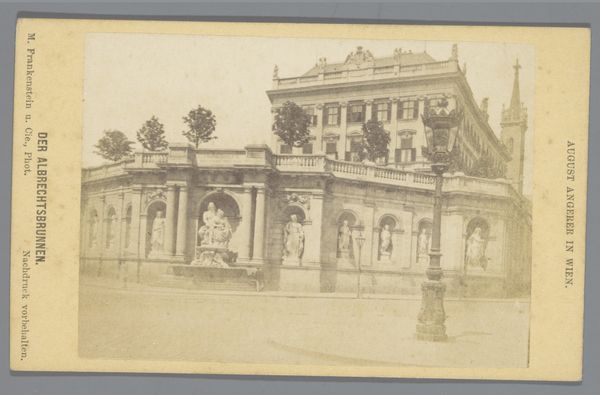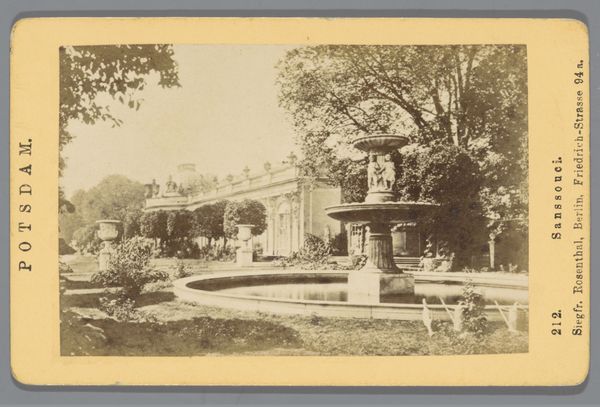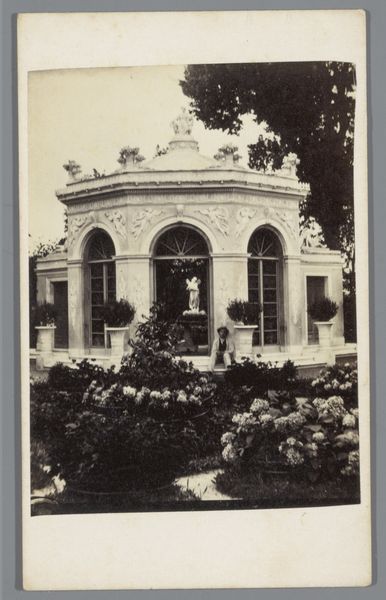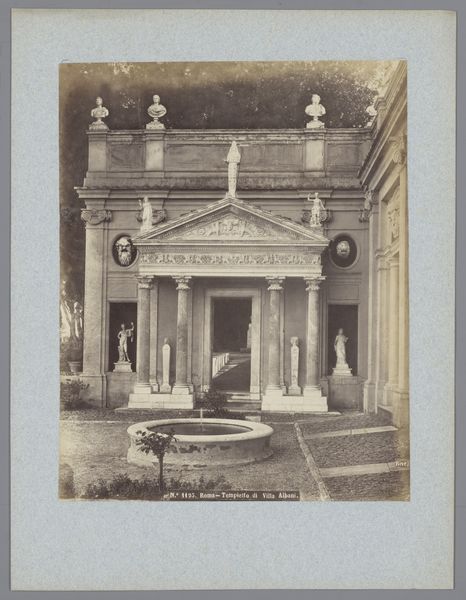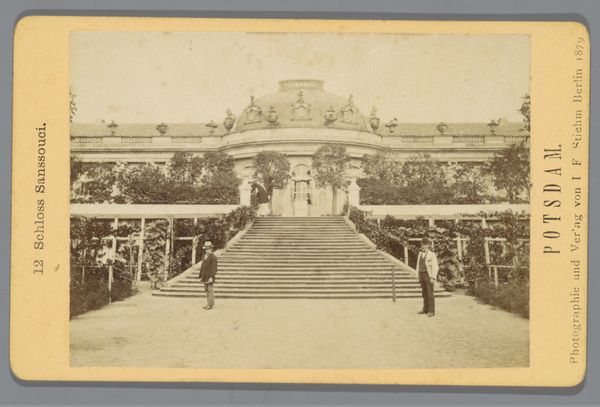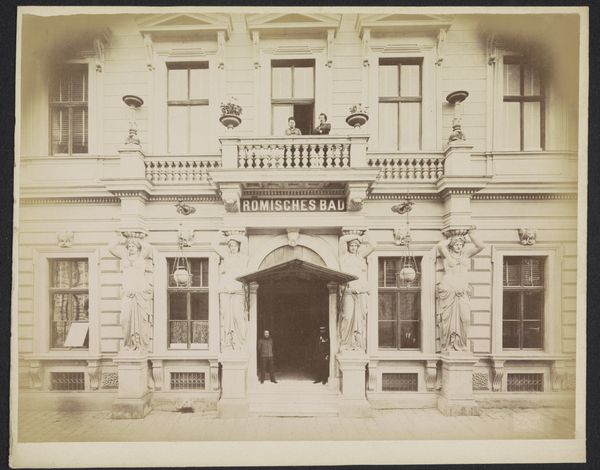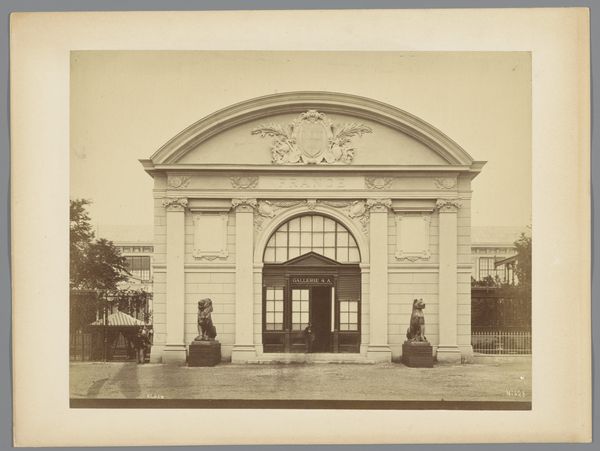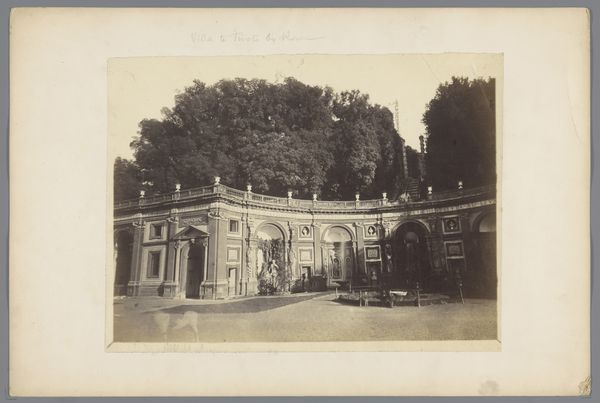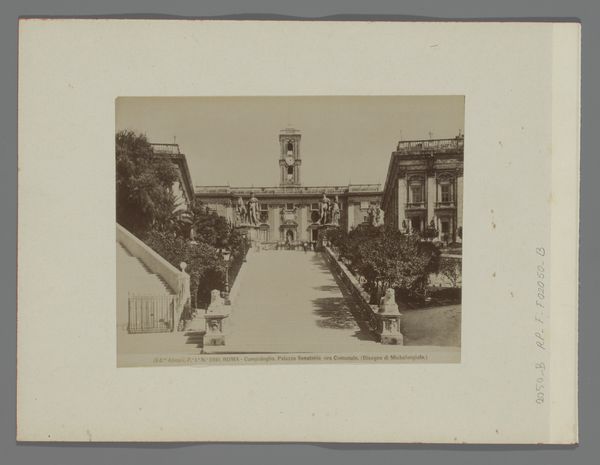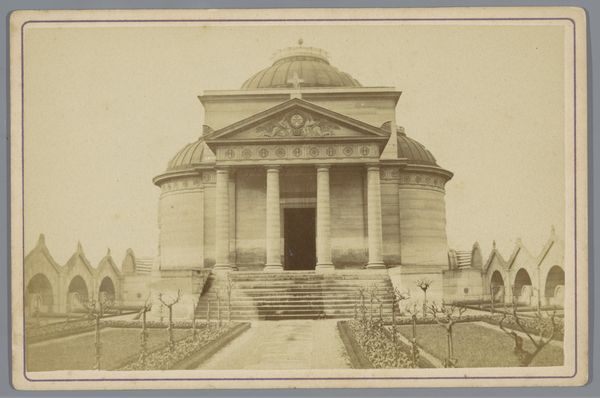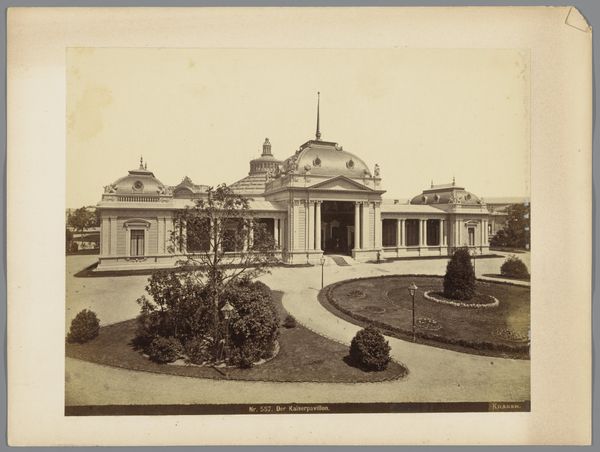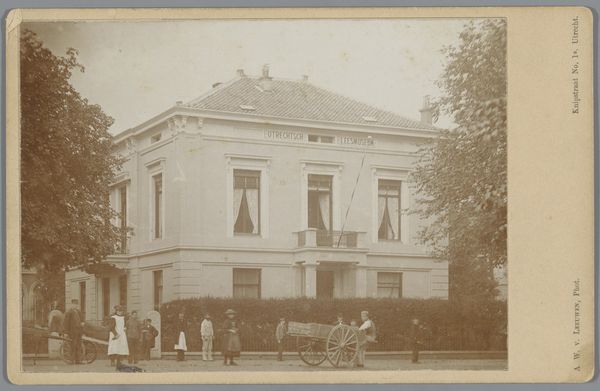
Dimensions: height 67 mm, width 105 mm
Copyright: Rijks Museum: Open Domain
This photograph of Sanssouci Palace in Potsdam, taken by Johann Friedrich Stiehm in 1879, showcases a round, domed structure adorned with elaborate ornamentation. Note the cartouches and sculpted vases atop the dome. These decorative elements, rooted in classical antiquity, signify power, prestige, and the continuity of cultural ideals. The cartouche, often bearing a coat of arms or noble insignia, has its origins in ancient Egypt, where it encased the names of pharaohs, ensuring their immortality. Similarly, the vase, prevalent in Greek and Roman art, symbolizes abundance and celebration, linking the palace to a lineage of opulence. Consider the presence of these motifs in Renaissance and Baroque architecture, emblems of authority echoed through centuries. Such symbols tap into our collective memory, evoking subconscious associations with history, nobility, and enduring grandeur. They serve as potent reminders of the past, reshaping the present and future.
Comments
No comments
Be the first to comment and join the conversation on the ultimate creative platform.
